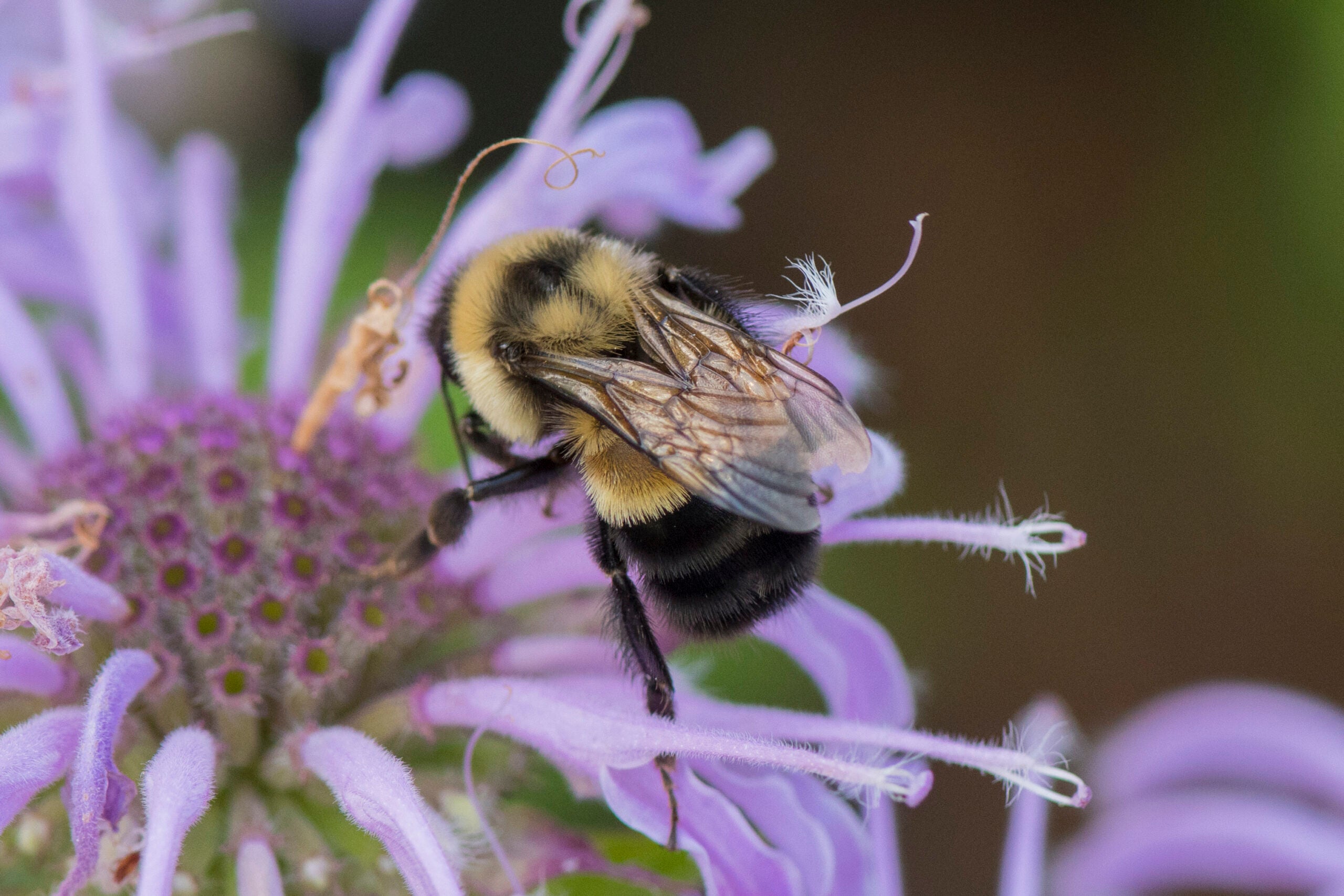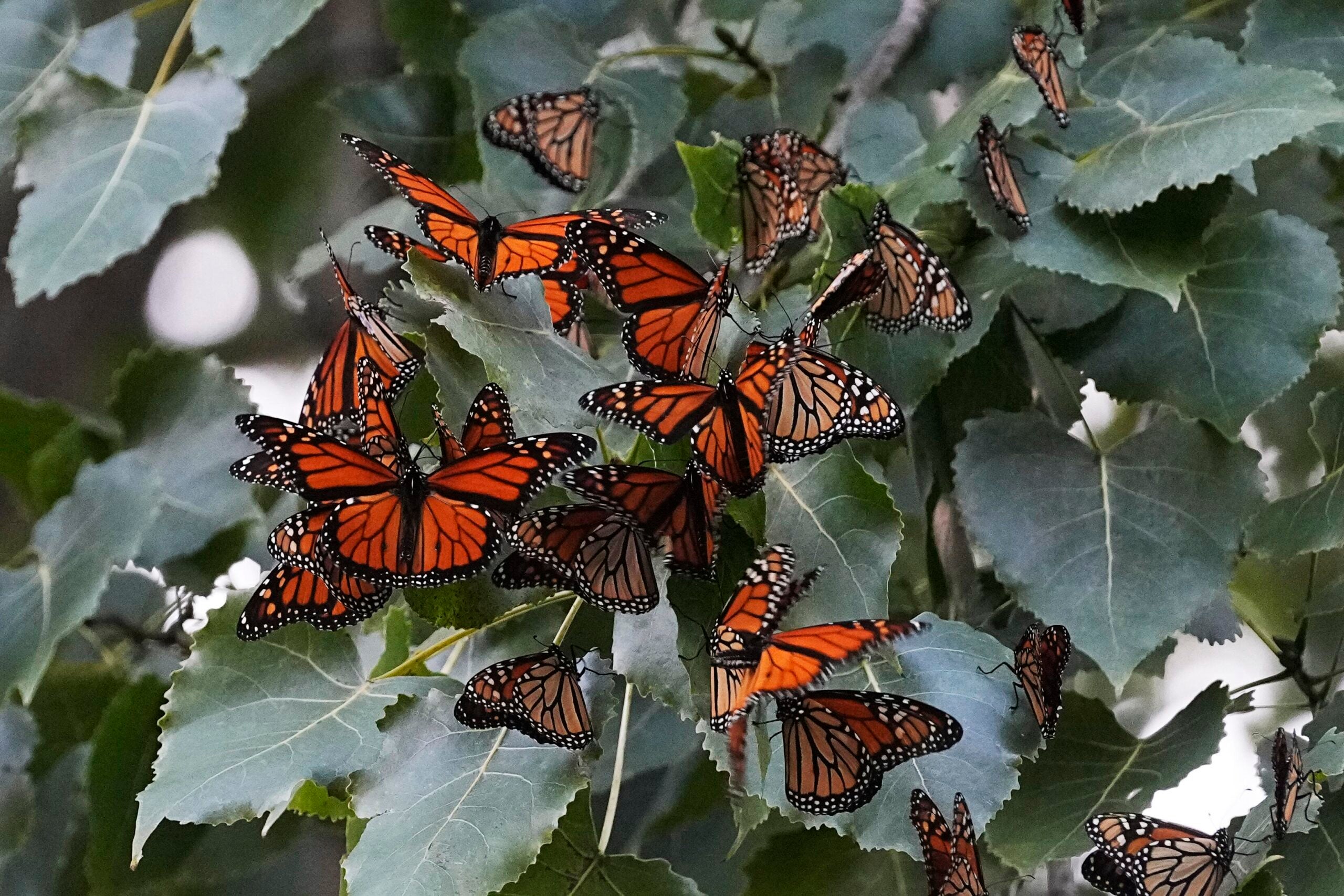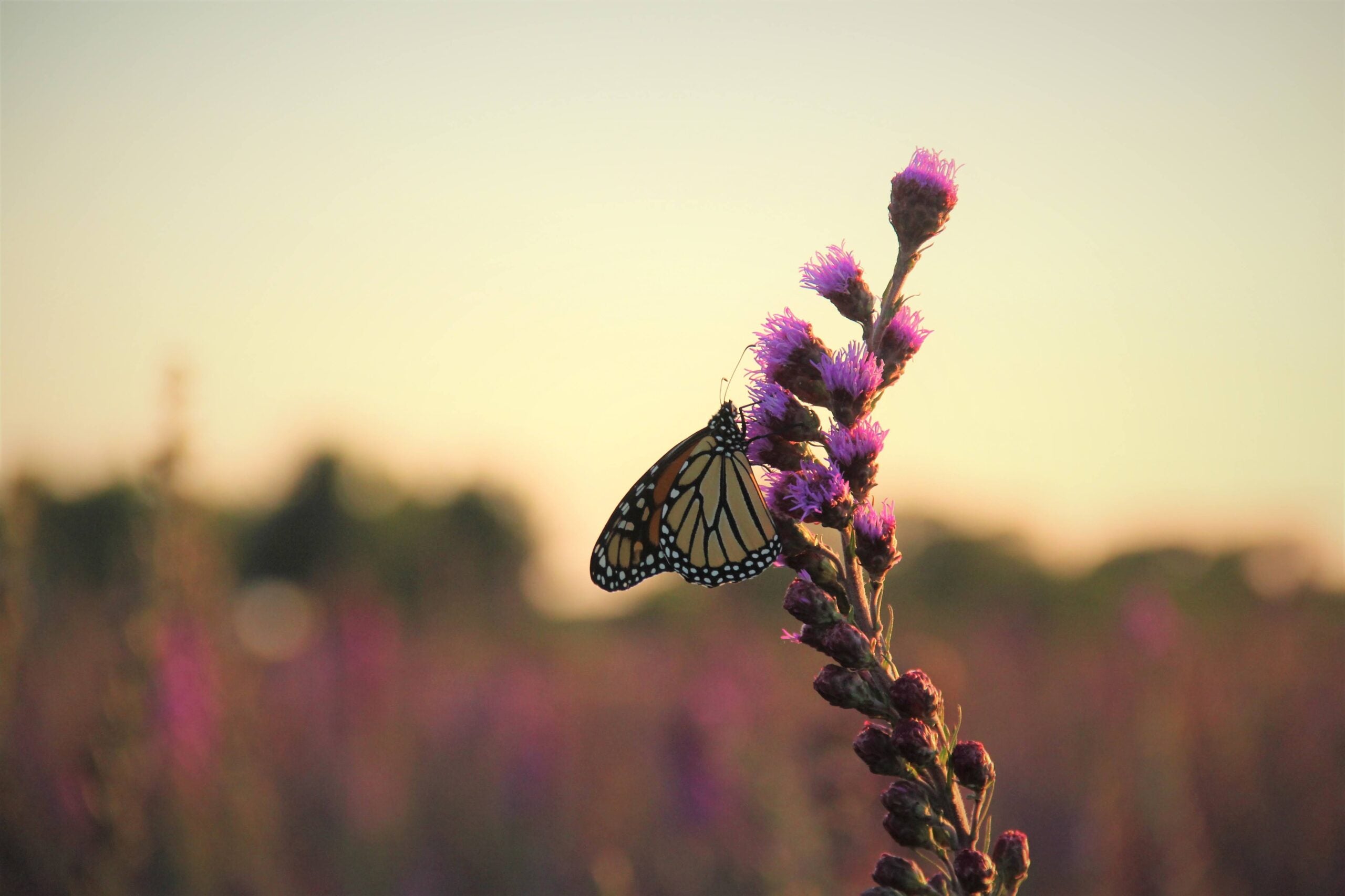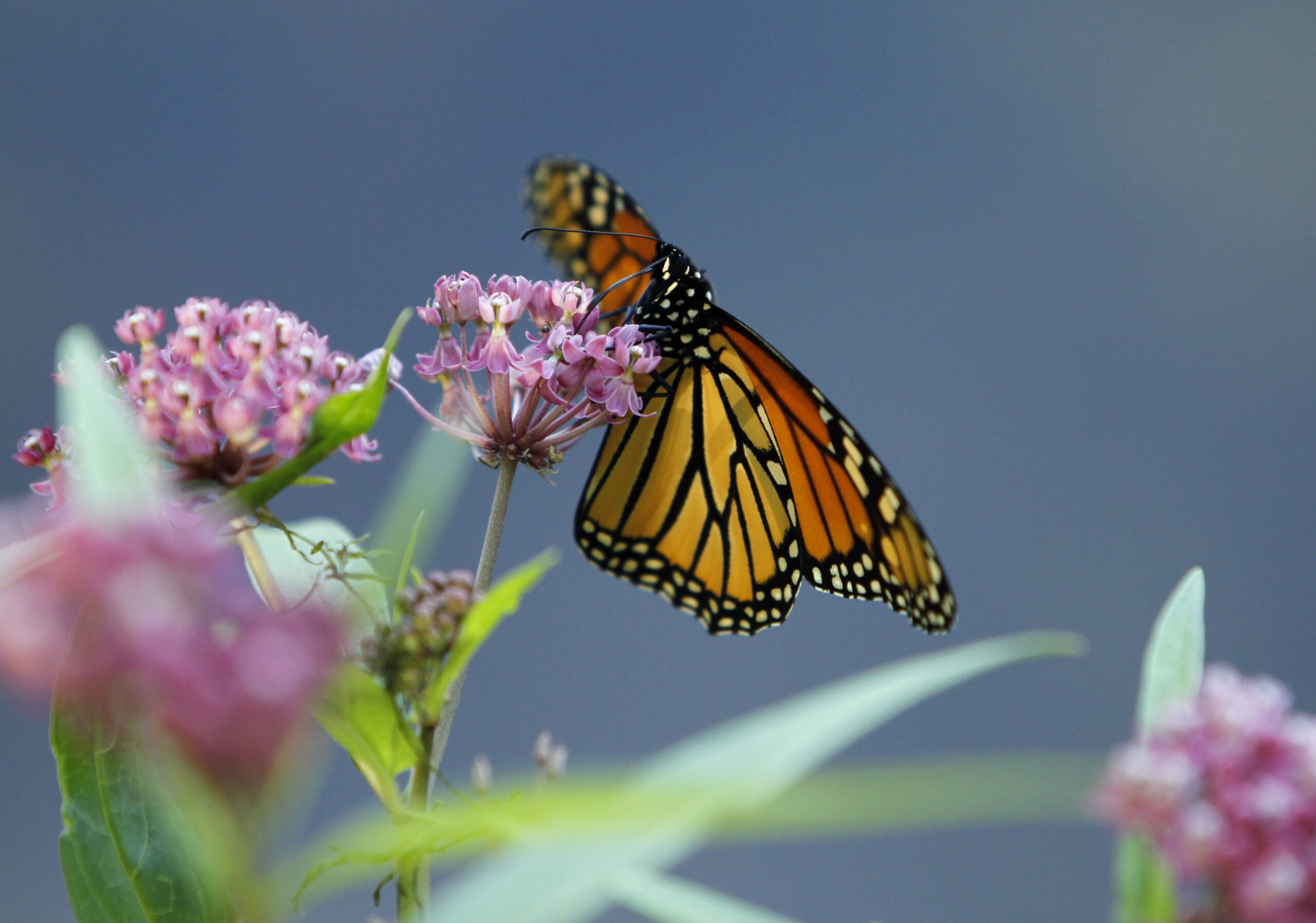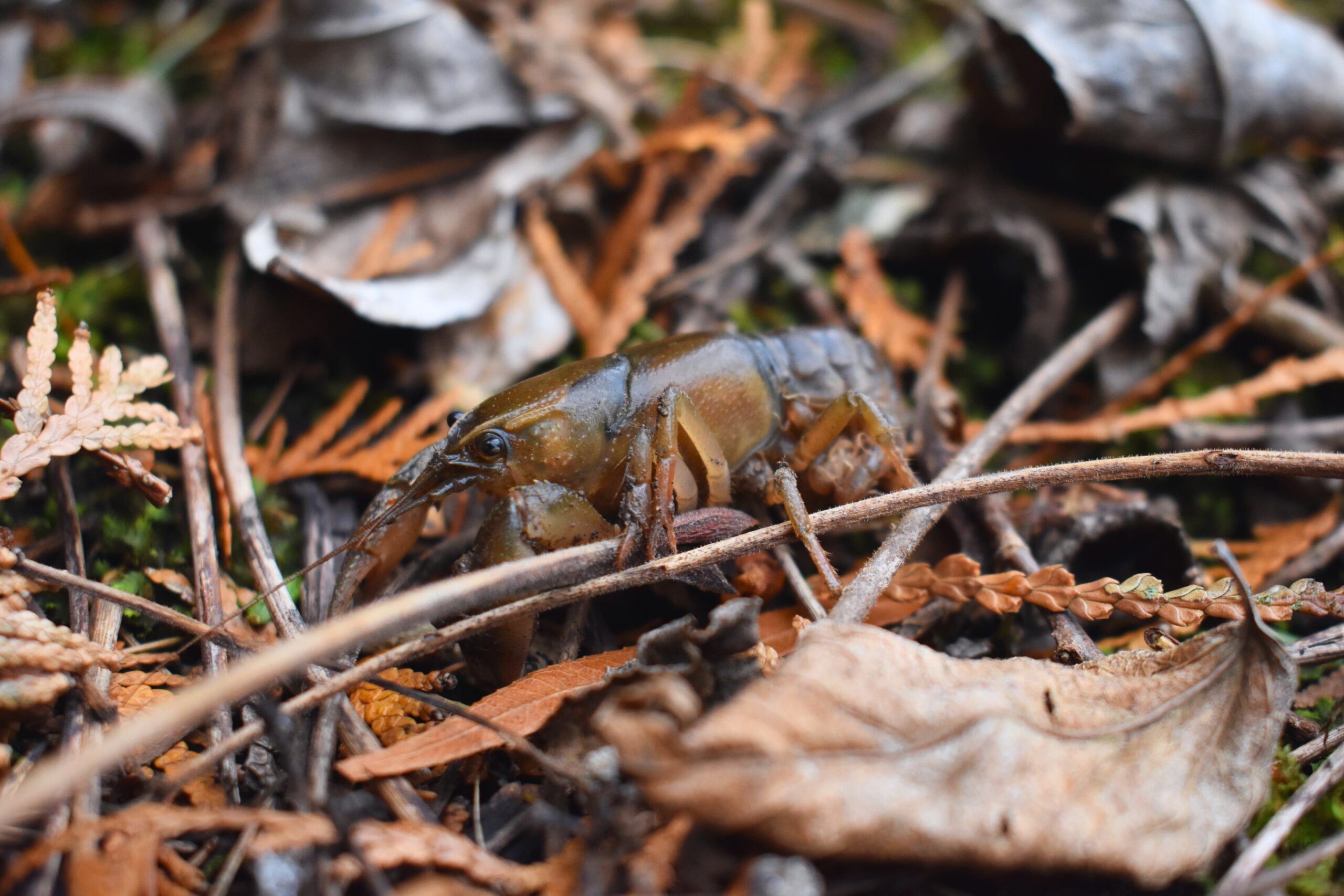The rusty patched bumble bee is all the buzz in Kenosha County right now.
Last week, a resident discovered a bee nest near the Pike River in Somers. After contacting the Root Pike Watershed Initiative Network, it was soon discovered it was a nest for the rusty patched bumble bee, an endangered species whose population has declined by an estimated 87 percent in recent years.
Elizabeth Braatz, an insect ecologist with Wisconsin Department of Natural Resources, said it was only the fifth such nest found in Wisconsin in the last 20 years. She went to view the site last week. She called it “breathtaking.”
News with a little more humanity
WPR’s “Wisconsin Today” newsletter keeps you connected to the state you love without feeling overwhelmed. No paywall. No agenda. No corporate filter.
“Seeing the future generations for this endangered species out and about and thriving was just a wonderful experience,” Braatz said.
“These are hard to find and very rare to find, so it was very exciting,” she added.
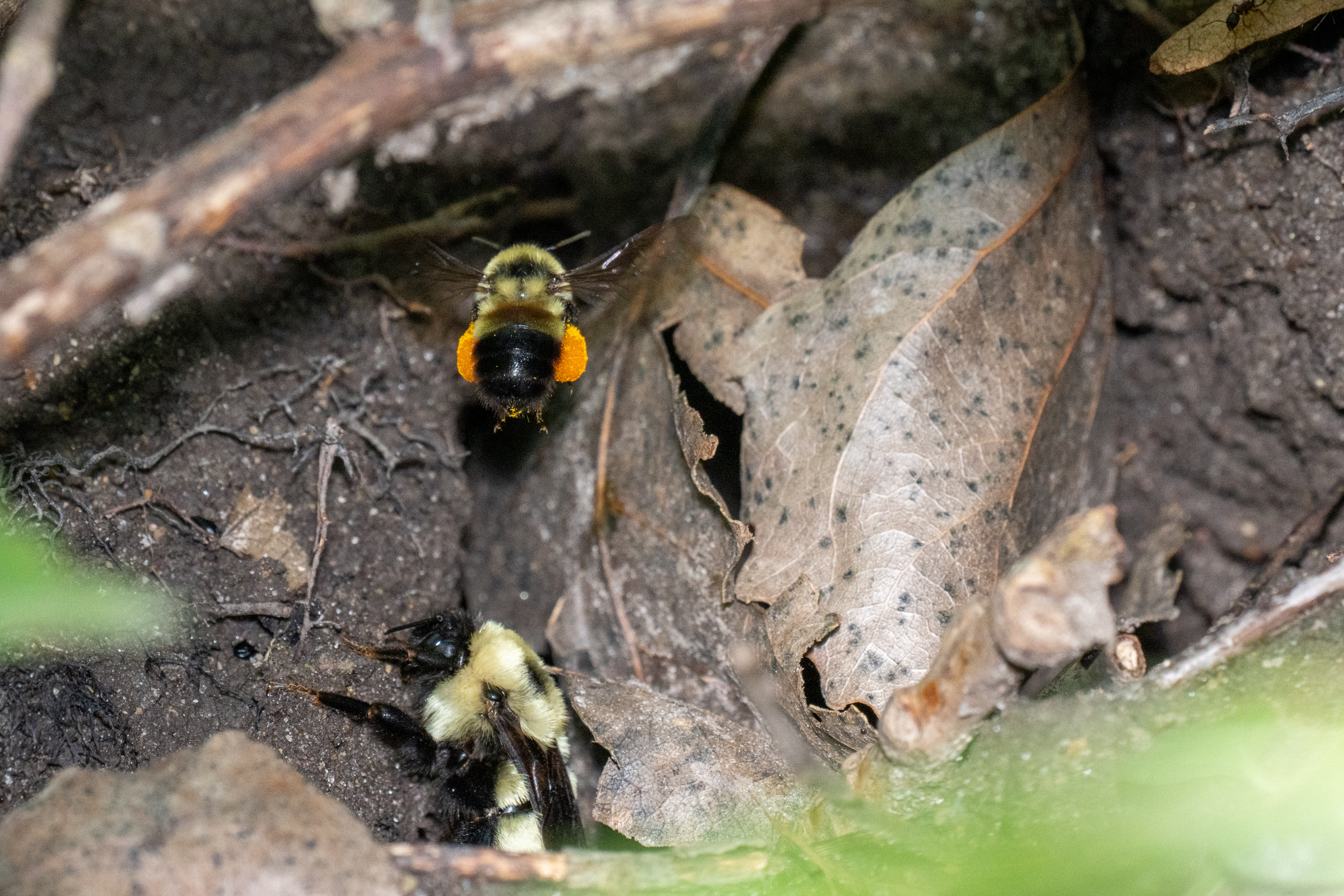
All rusty patched bumble bees have black heads, but only workers and males have a rusty, or reddish, patch centrally located on their back. They live in colonies that include a queen and female workers.
The species is native to eastern North America and was historically distributed across several states and Canadian provinces from the east coast to the upper Midwest. But since 2000, the bee has only been reported in 13 states and one Canadian province. That’s due to habitat loss, increase in farm size and technology, disease, pesticides and climate change, according to the U.S. Fish and Wildlife Service.
That’s what makes the discovery so exciting, said Kristine Heuser of the Root Pike Watershed Initiative Network. Heuser manages the pollinator patch program for that group, which helps create habitat for the bumble bee by clearing up brush and removing invasive and non-native trees and shrubs.
Heuser, who lives 15 minutes from where the discovery was made, said that program started in 2019.
“So to actually see it come to fruition in the watershed where I actually live was beyond exciting,” she said.
Heuser said the site of the discovery is being kept secret, to protect the bee. It’s also located on private land.
“The best thing we are doing to keep this nest safe is by staying away from it,” she said.
The rusty patched bumble bee was once an excellent pollinator of wildflowers, cranberries and other important crops, including plum, apple, alfalfa and onion seed, according to the Xerces Society for Invertebrate Conservation. The economic value of pollination services provided by native insects — mostly bees — is valued at an estimated $3 billion per year in the United States, according to the U.S. Fish and Wildlife Service.
“Pollinators are important for everyone,” Braatz said. “Even if you aren’t an ecologist or an entomologist … pollinators are so important for the environment that we all rely on.”
Braatz said there are over 400 native species of bees in Wisconsin. Insects pollinate about 85 percent of flowers and plants and about 35 percent of global crops benefit or rely on insect pollinators.
“Our grocery stores, our plates, even the health of a lot of the landscapes around us as we walk or drive to and from work are all deeply benefiting from pollinators,” Braatz said.
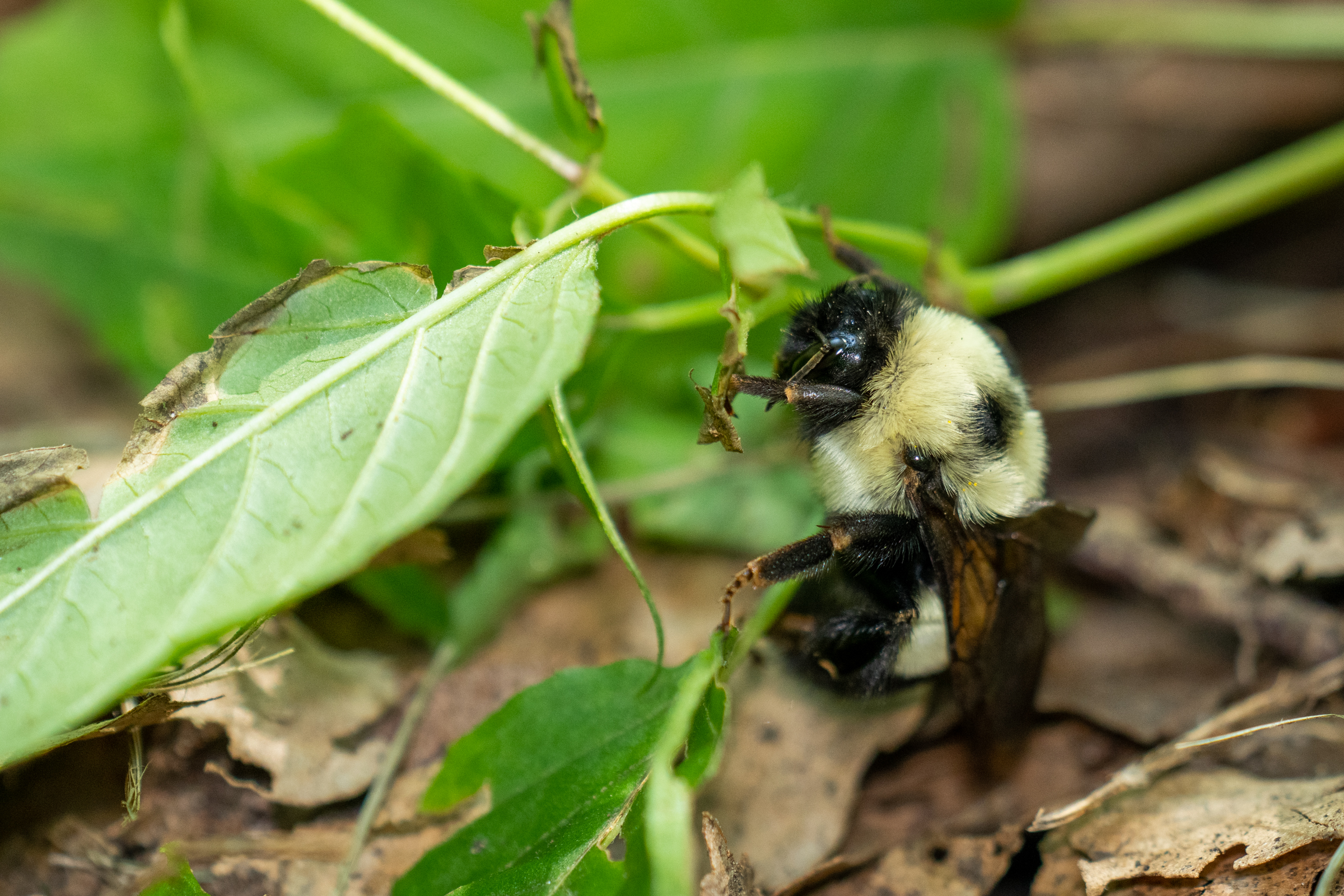
Braatz, who is also the coordinator for the Wisconsin DNR’s Bumble Bee Brigade — a citizen-led program to monitor bees across the state — said she saw approximately five newly hatched queen bees at the site when she visited it last week.
The nest is near the end of its lifecycle, Braatz said, but the newly hatched queens will hibernate over the winter and hopefully create their own nests next year. Braatz hopes more nests will be found in the area soon.
“My hope is that we can continue to create habitat for them and maintain habitat for them so that in this mixed-use landscape, we can be helpful for both people and bees,” Braatz said.
Heuser called the find “one of the most exciting things in my career so far.”
“Everyone should care about pollinators because they help put food on our table, ultimately,” she said.
Hesuer said if people want to set the stage for their own rusty patched bumble bee discovery, they can plant more native plants in their own backyards.
For insect pollinators, the Natural Resources Foundation of Wisconsin recommends planting:
- Swamp milkweed
- New Jersey tea
- Leadplant
- Rattlesnake master
- Anise hyssop
- Pale purple coneflower
- Native aster species
- Native goldenrod species
Wisconsin Public Radio, © Copyright 2025, Board of Regents of the University of Wisconsin System and Wisconsin Educational Communications Board.

